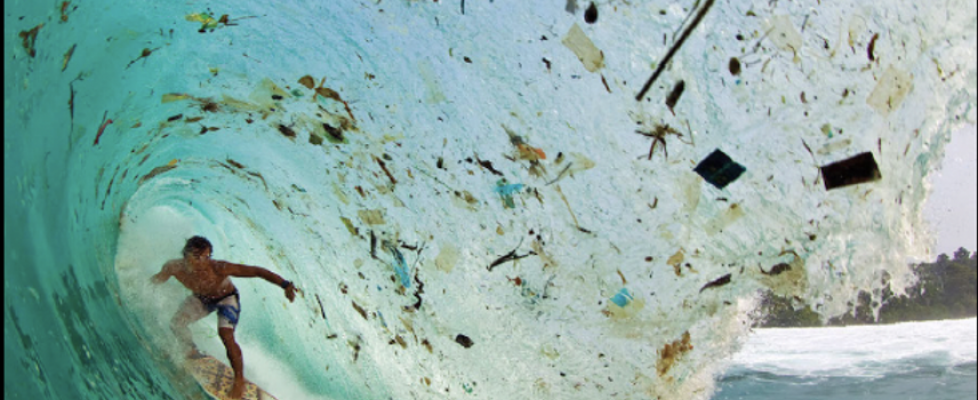Planet
The essence of fashion is defined as change, learning from the past in the present context. Meanwhile, every change in fashion can interact with pillars. Planet, people, profit, and purpose are four pillars closely linked for Fashion Means Business. The four pillars complement each other, and no one is more important than the other. PLANET makes us realise that companies need to reuse limited resources to form a closed loop in the industry; PEOPLE need to promote social and self-identity in their daily lives through fashion, beauty, and health choices; PROFIT creates value and contributes to the prosperity of the industry in a way that respects the entire ecosystem; and PURPOSE is something that every ethical and responsible fashion business should be transparent about and run their company accordingly.

For ‘Planet,’ reduce, repair, reuse, recycle… These ‘Re’ are practiced by sustainability rewards businesses for keeping our limited resources in a closed loop, forming a circular economy. Moreover, these actions help protect the planet that humans live with. However, Sara Arnold, a winner of BoF’s Future VOICES challenge, claims that the circular economy is promoted as a guilt-free solution to consumerism, and a sustainable economy can only be achieved if companies stop selling goods (Sara, 2017). While increased recyclability is laudable and necessary, the circular economy is being marketed as a bite-size change rather than a realistic, systemic reform. Therefore, an economic cycle formulated at a self-selected pace may be a guilt-free method of accelerating consumerism. Nevertheless, finding the right direction to sustain the circular economy is necessary, such as realising that yarn can be recycled indefinitely, and although closing the production loop towards infinite recycling of yarn seems a long way off, progress has been made (Frances, 2014).
As one of the most wasteful industries on the planet, the fashion industry has overproduced production, which has polluted the environment and the earth’s ecology (Drapers, 2022). This consequence creates a situation where the fashion industry must address progress towards sustainable development more quickly. Even though H&M, a leader in textile recycling, still has a long way to go. Because of the complexity of the mix of materials in many garments, it is an excellent challenge for recyclable technology. However, this can be started by changing how garments are designed and the fabrics (Sara, 2017).
Therefore, change in the fashion business is very important for sustainable development as we have many goals to achieve. The United Nations’ Sustainable Development Goals (SDGs) are a great way of summarising and calling attention to all the problems facing the planet today, especially poverty, hunger, and climate change, and trying to solve them by 2030. This includes that fashion companies also have much to contribute to reaching the SDGs, as they influence each other. Despite significant progress in global measures on water resources, hundreds of millions still need access to safe drinking water, sanitation, and hygiene. Water pollution can be reduced by controlling the amount of water used in the fashion industry, thus providing a small quantity of power towards clean water and sanitation (one of the Sustainable Development Goals).

Clothing that cannot be sold and reused by fast fashion brands piles up in underdeveloped countries such as Africa and can lead to the pollution of local land and water resources. Some materials that cannot be broken down by nature are used to make clothing. In addition, fashion companies’ technical capacity for recyclability needs to be improved. The good news is that textile manufacturers are starting to produce more fabrics that do not contain the cancer-causing chemical antimony, which is released into the environment through wastewater. Much research is also being done into manufacturing bio-based polymers that are recyclable, biodegradable, and made from sustainable resources. Such fabrics have some positive attributes of traditional synthetic materials, including low manufacturing costs, but without any adverse effects (Frances, 2014).
References List
Arnold, S. (2017) ‘An Alternative to Consumerism Does Exist: The Performance Economy’, Business of Fashion, sustainability. Available at: https://www.businessoffashion.com/opinions/sustainability/an-alternative-to-consumerism-does-exist-the-performance-economy/
Corner, F. (2014) Why Fashion Matters. Place of publication: London: Thames and Hudson, Limited.
Remy, N., Speelman, E., and Swartz, S. (2016) Style that’s sustainable: A new fast-fashion formula. Available at: https://www.mckinsey.com/capabilities/sustainability/our-insights/style-thats-sustainable-a-new-fast-fashion-formula (Accessed: 16 Oct 2016).
United Nation (2023) The Sustainable Development Goals report. Available at: https://unstats.un.org/sdgs/report/2023 (Accessed: Sep 2023).
